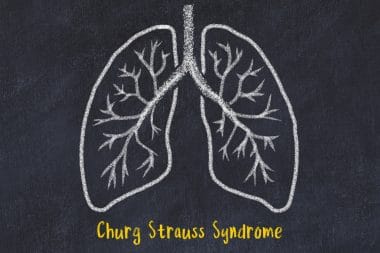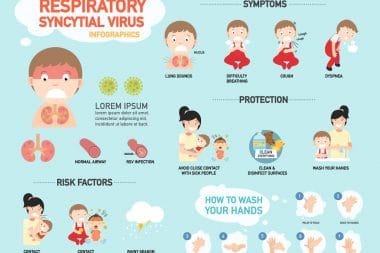More commonly, epistaxis is referred to as the common nosebleed. There are two types of nosebleeds, anterior and posterior, with the difference being where the bleeding comes from. Anterior nosebleeds make up about 90% of all nosebleeds. These usually come from a blood vessel toward the front part of the nose. These nosebleeds are very easy to control, and in most cases, can be treated in the comfort of your own home. The second type of bloody nose is a posterior nosebleed and is far less common. These nosebleeds stem from bleeding that comes from an artery in the back of the nose. Most of the time, elderly people are the main people that suffer from this particular type of nosebleed. If your nosebleed is posterior it will warrant a trip to the hospital. Often, a specialized ear, nose, and throat doctor, called an otolaryngologist, will be consulted to stop the bleeding. Anterior nosebleeds most commonly occur in children between the ages of 2 and 10, and posterior nosebleeds occur in adults aged 50-80.
What Causes a Nosebleed?
A direct trauma to the outside area of the nose is the most likely cause for a bloody nose to occur. This can either be a blow to the face, or repeated irritation such as repeated sneezing or nose blowing if you have a cold. Sometimes certain antihistamines to treat a cold or allergies can dry out the nasal membranes and cause a nosebleed. Less commonly, a nosebleed can indicate an underlying problem with the inability to clot blood. Your body’s inability to clot can be caused by blood thinner medication or certain types of liver disease. In extremely rare cases, nosebleeds can be caused by abnormal blood vessels or cancer.
Signs and Symptoms
During a nosebleed, most typically blood will come from just one nostril. However, if the blood flow is heavy enough, the blood can fill the space between the two nostrils, called the nasopharynx. In this instance, people will experience blood coming from both nostrils. Another common symptom of a heavy nosebleed is vomiting or spitting up blood. This occurs when blood runs down the back of your throat. If the blood loss is excessive, you can experience dizziness or lightheadedness. Some people even experience fainting as a result of the heavy blood loss. If the bloody nose is a direct result of a person’s inability to clot blood typically other symptoms will accompany the nosebleed. These other symptoms might include bleeding gums while brushing your teeth, or blood in your urine or bowel movements. Another indication of a blood clotting problem could be if you bruise very easily.
Treatment
Luckily, the majority of nosebleeds can be treated in the privacy of your own home without a doctor. When a bloody nose occurs, it is always important to remain calm. Sit down with your back straight, and tilt your head slightly forward. Tilting your head backward will only cause the blood to run down the back of your throat which could cause you to vomit or choke on the blood. Pinch the tip of your nose with your thumb and index finger, and hold your nose pinched together for 10 minutes. It is helpful to have someone time you to make sure you don’t release the pressure on your nose any sooner. If any blood has dripped to your mouth, make sure to spit it out and do not swallow the blood. In most cases, this treatment will stop the nosebleed. After the nosebleed, it is important to avoid anything that might irritate the nose, such as sneezing or blowing your nose. Exposure to cold and dry environments can worsen the nosebleed, or increase the likelihood of recurrence. Adding a humidifier or vaporizer can help keep moisture in the area and avoid further nosebleed problems. Also, a nasal spray can help moisturize the membranes if the bloody nose is a result of a dry nostril.
If your nosebleed warrants a trip to the doctor, the course of treatment will depend entirely on whether the nosebleed is anterior or posterior. For an anterior nosebleed, the doctor may cauterize the point at which the bleeding is coming from if it is easily seen. For extreme cases, the doctor may use nasal packing. The packing applies pressure to the site of the blood flow to help stem the bleeding. Typically, you will be sent home with the packing in place, and will remain in place for 24-72 hours. If the bloody nose is a posterior nosebleed packing is required, and is usually balloon packing. This, unfortunately, is not particularly comfortable and is usually accompanied by a sedative and pain medication. The packing is left in place for 48-72 hours. If the bleeding has not stopped from the packing, surgery may be required. The doctor will closely examine the packing because infection or blockages to the breathing passageway are fairly common with extended balloon packing in the nasal cavity.
When to see a Doctor
You should probably think about scheduling a doctor appointment if you have repeated nosebleeds, especially if the nosebleeds occur over a short time span. If the nosebleed is accompanied by additional bleeding, such as blood in your urine or stool, you should consult a doctor. If you have a liver disease or are currently taking blood thinner medication and experience a nosebleed, see a doctor. You should also see your doctor if you have recently undergone chemotherapy treatments and are now experiencing nosebleeds.
Emergency medical attention is required if your nose continues to bleed even after pinching your nose for 10 minutes. If you are feeling dizzy or feel like you are going to pass out from the nosebleed, seek medical attention. If the nosebleed is accompanied by trouble breathing or an elevated heart rate, also seek emergency care. Or, if you are coughing up or vomiting blood, visit the emergency room. If the nosebleed is a direct result of direct trauma to the nose and you feel your nose might be broken seek emergency medical attention. This is also true if the nosebleed is a direct result of a foreign body present in the nostril.







Reply